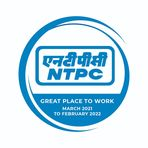India’s Economic Landscape: A Tapestry of Growth and Challenges
September 21, 2024, 3:39 am

Location: United States, California, Menlo Park
Employees: 11-50
Founded date: 2006
India stands at a crossroads, where growth meets challenge. The economy is a vibrant tapestry, woven with threads of innovation, infrastructure, and policy shifts. Recent developments paint a picture of both promise and caution.
In September 2024, diesel sales in India dropped by 4% compared to August. This decline is a familiar tale during the monsoon season, when heavy rains slow industrial activity and transportation. Diesel, the lifeblood of trucks and commercial vehicles, saw sales plummet to 2.4 million metric tons. This figure is not just a number; it reflects the pulse of the economy. The 12.3% drop from last year signals a broader trend. Gasoline sales remained flat, but even they dipped 5.1% year-on-year. Monsoon rains also dampened agricultural demand for gasoil-powered irrigation generators.
While the monsoon casts a shadow, the government is busy laying the groundwork for a brighter future. On September 11, 2024, the government approved the formation of ASHVINI, a joint venture between the Nuclear Power Corporation of India Limited (NPCIL) and NTPC Ltd. This partnership aims to build and operate nuclear power plants, a move that signals a commitment to sustainable energy. The transfer of the Mahi Banswara Rajasthan Atomic Power Project to ASHVINI marks a significant step in India’s energy strategy. This initiative not only promises to enhance energy security but also aims to reduce reliance on fossil fuels.
In the realm of real estate, CRC Group is making waves. The Noida-based developer has partnered with Dubai’s Shaun Killa to create an ultra-luxury residential project in Greater Noida. Killa, known for his iconic designs, brings a fresh perspective to the Indian market. This collaboration aims to blend sustainability with luxury, a combination that appeals to the growing affluent class in India. The project is set to feature between 375 to 400 luxury units, showcasing a commitment to quality and innovation.
Venture capital is also making headlines. Nexus Venture Partners recently sold a 5.97% stake in India Shelter Finance Corporation for Rs 4.82 billion. This company focuses on first-time home loan buyers in Tier-II and Tier-III cities, addressing a critical need in the housing market. The sale reflects a strategic move by Nexus, as it seeks to optimize its portfolio while continuing to support the growing demand for affordable housing.
Amid these developments, the government is also taking steps to support micro, small, and medium enterprises (MSMEs). A new cap on interest subvention for MSME manufacturers has been set at ₹5 crore per Interest Eligibility Certificate (IEC). This decision aims to streamline financial support and enhance competitiveness in the manufacturing sector. Industry experts view this as a stabilizing measure, providing clarity for manufacturers seeking financial assistance.
Looking ahead, the MSME department plans to resume online land allotment in 2025. This initiative is crucial for industries looking to expand. The previous halt in the process due to technical issues had delayed many expansion plans. A revamped portal promises a more seamless experience, which is essential for fostering new investments and business growth.
Infrastructure development is another cornerstone of India’s growth strategy. The government has announced plans to construct 12 industrial smart cities. These cities will incorporate advanced technologies to enhance efficiency and livability. This initiative is not just about urban development; it’s about creating a robust economic environment that fosters innovation and job creation.
Transportation infrastructure is also receiving attention. A new 300-foot-wide greenfield road is set to connect the Outer Ring Road (ORR) with the Regional Ring Road (RRR) in Telangana. This project aims to ease traffic congestion and improve connectivity, facilitating smoother transportation for both commuters and freight. Such developments are vital for economic growth, as they enhance accessibility and reduce travel time.
In Andhra Pradesh, the central government has approved Rs 65.85 billion for seven national highway projects. These projects span 384 kilometers and are part of the Bharat Mala initiative. The funding is a testament to the government’s commitment to improving road infrastructure, which is crucial for economic development.
As India navigates these complex waters, the interplay of growth and challenge becomes evident. The economy is like a river, flowing with opportunities but also facing obstacles. The government’s proactive measures, coupled with private sector innovation, are essential for steering the country toward a prosperous future.
In conclusion, India’s economic landscape is a dynamic mix of promise and caution. The recent developments in diesel sales, energy initiatives, real estate, and infrastructure projects reflect a nation in transition. As the government and private sector work together, the path ahead is filled with potential. The journey may be fraught with challenges, but the destination promises a brighter, more sustainable future for all.
In September 2024, diesel sales in India dropped by 4% compared to August. This decline is a familiar tale during the monsoon season, when heavy rains slow industrial activity and transportation. Diesel, the lifeblood of trucks and commercial vehicles, saw sales plummet to 2.4 million metric tons. This figure is not just a number; it reflects the pulse of the economy. The 12.3% drop from last year signals a broader trend. Gasoline sales remained flat, but even they dipped 5.1% year-on-year. Monsoon rains also dampened agricultural demand for gasoil-powered irrigation generators.
While the monsoon casts a shadow, the government is busy laying the groundwork for a brighter future. On September 11, 2024, the government approved the formation of ASHVINI, a joint venture between the Nuclear Power Corporation of India Limited (NPCIL) and NTPC Ltd. This partnership aims to build and operate nuclear power plants, a move that signals a commitment to sustainable energy. The transfer of the Mahi Banswara Rajasthan Atomic Power Project to ASHVINI marks a significant step in India’s energy strategy. This initiative not only promises to enhance energy security but also aims to reduce reliance on fossil fuels.
In the realm of real estate, CRC Group is making waves. The Noida-based developer has partnered with Dubai’s Shaun Killa to create an ultra-luxury residential project in Greater Noida. Killa, known for his iconic designs, brings a fresh perspective to the Indian market. This collaboration aims to blend sustainability with luxury, a combination that appeals to the growing affluent class in India. The project is set to feature between 375 to 400 luxury units, showcasing a commitment to quality and innovation.
Venture capital is also making headlines. Nexus Venture Partners recently sold a 5.97% stake in India Shelter Finance Corporation for Rs 4.82 billion. This company focuses on first-time home loan buyers in Tier-II and Tier-III cities, addressing a critical need in the housing market. The sale reflects a strategic move by Nexus, as it seeks to optimize its portfolio while continuing to support the growing demand for affordable housing.
Amid these developments, the government is also taking steps to support micro, small, and medium enterprises (MSMEs). A new cap on interest subvention for MSME manufacturers has been set at ₹5 crore per Interest Eligibility Certificate (IEC). This decision aims to streamline financial support and enhance competitiveness in the manufacturing sector. Industry experts view this as a stabilizing measure, providing clarity for manufacturers seeking financial assistance.
Looking ahead, the MSME department plans to resume online land allotment in 2025. This initiative is crucial for industries looking to expand. The previous halt in the process due to technical issues had delayed many expansion plans. A revamped portal promises a more seamless experience, which is essential for fostering new investments and business growth.
Infrastructure development is another cornerstone of India’s growth strategy. The government has announced plans to construct 12 industrial smart cities. These cities will incorporate advanced technologies to enhance efficiency and livability. This initiative is not just about urban development; it’s about creating a robust economic environment that fosters innovation and job creation.
Transportation infrastructure is also receiving attention. A new 300-foot-wide greenfield road is set to connect the Outer Ring Road (ORR) with the Regional Ring Road (RRR) in Telangana. This project aims to ease traffic congestion and improve connectivity, facilitating smoother transportation for both commuters and freight. Such developments are vital for economic growth, as they enhance accessibility and reduce travel time.
In Andhra Pradesh, the central government has approved Rs 65.85 billion for seven national highway projects. These projects span 384 kilometers and are part of the Bharat Mala initiative. The funding is a testament to the government’s commitment to improving road infrastructure, which is crucial for economic development.
As India navigates these complex waters, the interplay of growth and challenge becomes evident. The economy is like a river, flowing with opportunities but also facing obstacles. The government’s proactive measures, coupled with private sector innovation, are essential for steering the country toward a prosperous future.
In conclusion, India’s economic landscape is a dynamic mix of promise and caution. The recent developments in diesel sales, energy initiatives, real estate, and infrastructure projects reflect a nation in transition. As the government and private sector work together, the path ahead is filled with potential. The journey may be fraught with challenges, but the destination promises a brighter, more sustainable future for all.

